
The New World porcupines, family Erethizontidae, are large arboreal rodents, distinguished by their spiny coverings from which they take their name. They inhabit forests and wooded regions across North America, and into northern South America. Although both the New World and Old World porcupine families belong to the Hystricognathi branch of the vast order Rodentia, they are quite different and are not closely related.
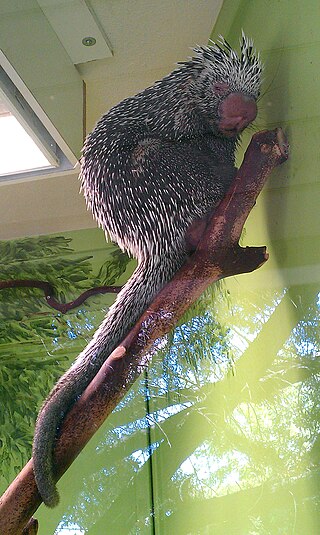
The prehensile-tailed porcupines or coendous are found in Central and South America. Two other formerly recognized Neotropical tree porcupine genera, Echinoprocta and Sphiggurus, have been subsumed into Coendou, since Sphiggurus was shown by genetic studies to be polyphyletic, while Echinoprocta nested within Coendou.
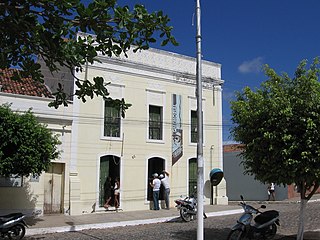
Antônio Gonçalves da Silva, popularly known as Patativa do Assaré, was a popular Brazilian oral poet, improviser of oral verse, composer, singer and guitar player. One of the main articulators of the Brazilian North-eastern oral poetry of the 20th century.

The hooded visorbearer is a small species of hummingbird in the family Trochilidae. Endemic to the east Brazilian state of Bahia, it is found only at higher altitudes in the Chapada Diamantina region. The species is sexually dimorphic. The male is an iridescent bronzy-green overall, with black on his crown and the sides of his head. His forehead and throat are a glittering green shading to bluish-green at the lower edge and narrowly bordered by black. The female is bronzer, with a green crown and brown sides to her head. Her throat is less colorful than the male's, and she lacks iridescence on her forehead. Both sexes have crimson tails and a narrow white breast band, the male with a brilliantly iridescent golden-orange spot in the center, at the lower edge of his gorget.
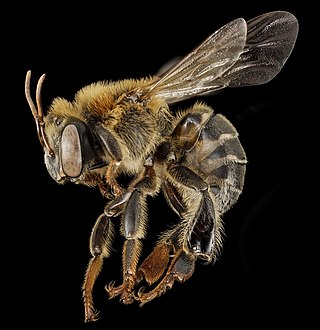
Melipona is a genus of stingless bees, widespread in warm areas of the Neotropics, from Sinaloa and Tamaulipas (México) to Tucumán and Misiones (Argentina). About 70 species are known. The largest producer of honey from Melipona bees in Mexico is in the state of Yucatán where bees are studied at an interactive park called "Bee Planet" which is within the Cuxtal Ecological Reserve.
Nordestina is a municipality in the state of Bahia in the North-East region of Brazil.
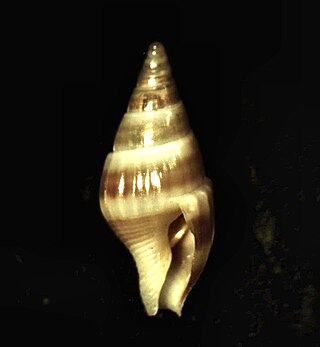
Cosmioconcha is a genus of sea snails, marine gastropod mollusks in the family Columbellidae, the dove snails.

Papuliscala is a genus of small sea snails, marine gastropods in the family Epitoniidae of the superfamily Epitonioidea, the wentletraps, the purple snails, and their allies.
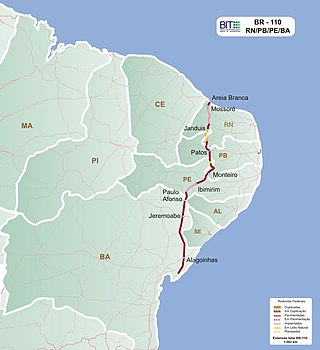
BR-110 is a federal highway of Brazil. The 1091 kilometre road connects Areia Branca to Catu.
São Miguel Paulista is a district in the subprefecture of the same name in the city of São Paulo, Brazil.

The escala nordestina are a body of musical scales commonly used in the music of the Nordeste, the northeastern region of Brazil. The term can apply to several different scales, including the Mixolydian, the Lydian with a flattened seventh, and the Dorian. These three modes have in common the rejection of the use of the major seventh as the leading-tone, generally preferring the more "acoustic and natural" minor seventh. The term northeastern scale is most commonly used to refer to the Mixolydian mode, which is extensively used in baião and frevo music. In Brazilian music, the Dorian mode is formed from the Mixolydian mode, by the lowering of the third, thus being a minor version of the former. The Brazilian Lydian, somewhat less common in practice, is a synthetic scale closely related to the harmonic series.
The vaquejada is a sport typical to the Nordeste region of Brazil, in which two cowboys ("vaqueiros") on horseback pursue a bull, seeking to pin it between the two horses and direct it to a goal, where the animal is then knocked over.
Gisostola is a genus of longhorn beetles of the subfamily Lamiinae, containing the following species:
Cacostola is a genus of longhorn beetles of the subfamily Lamiinae, containing the following species:
Via Brasil Linhas Aéreas was a Brazilian charter airline founded in 1999. It ceased operations in 2002.
Gisostola nordestina is a species of beetle in the family Cerambycidae. It was described by Galileo and Martins in 1987. It is known from Brazil.
Saramandaia is a 1976 Brazilian telenovela created by Dias Gomes, produced and aired by TV Globo.
Camargoia is a genus of bees belonging to the family Apidae.

Francisco Altino Lima was a Brazilian politician who was a councilor in the city council of São Paulo, at one point serving as council president. He served as the acting mayor of the city from 15 March to 10 May 1983.









